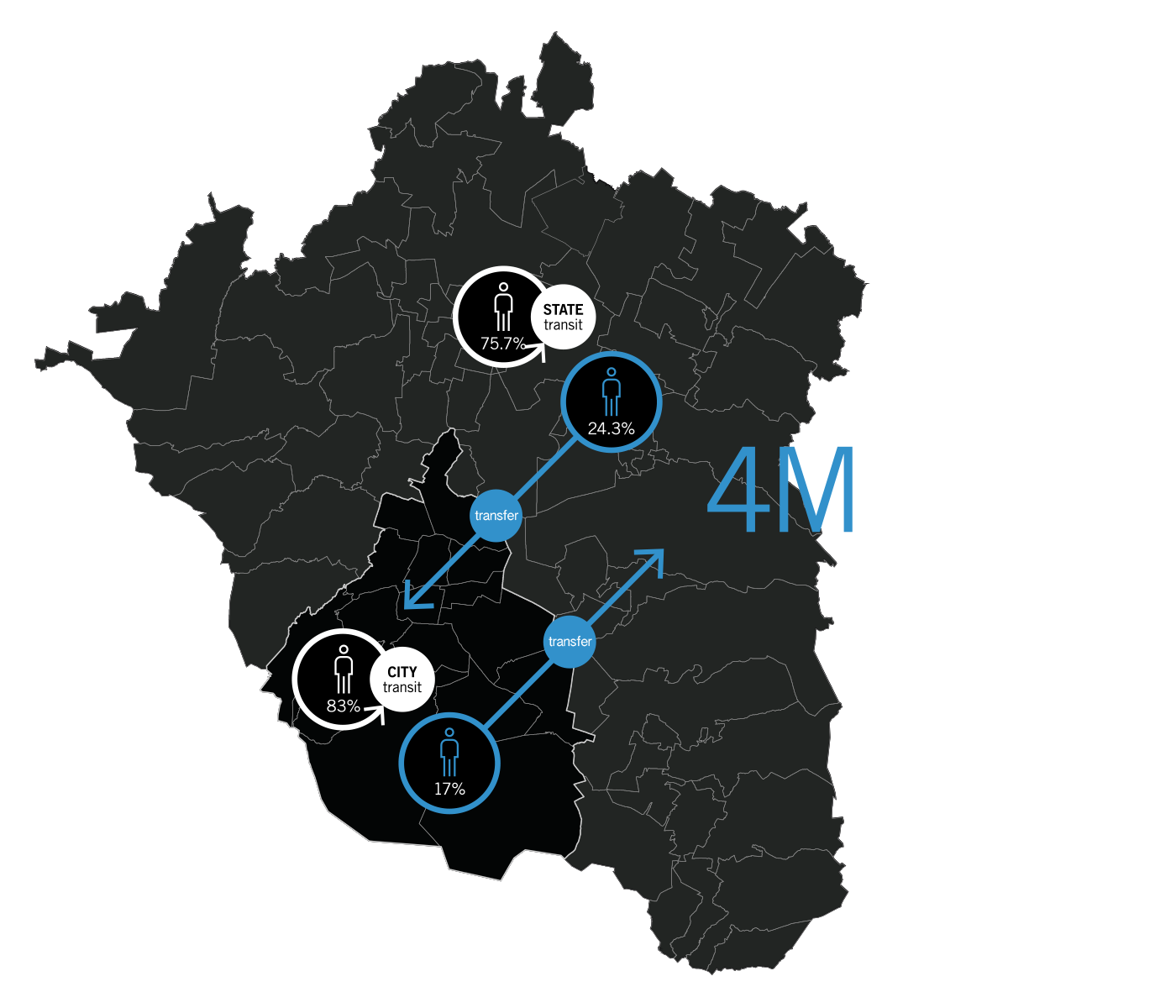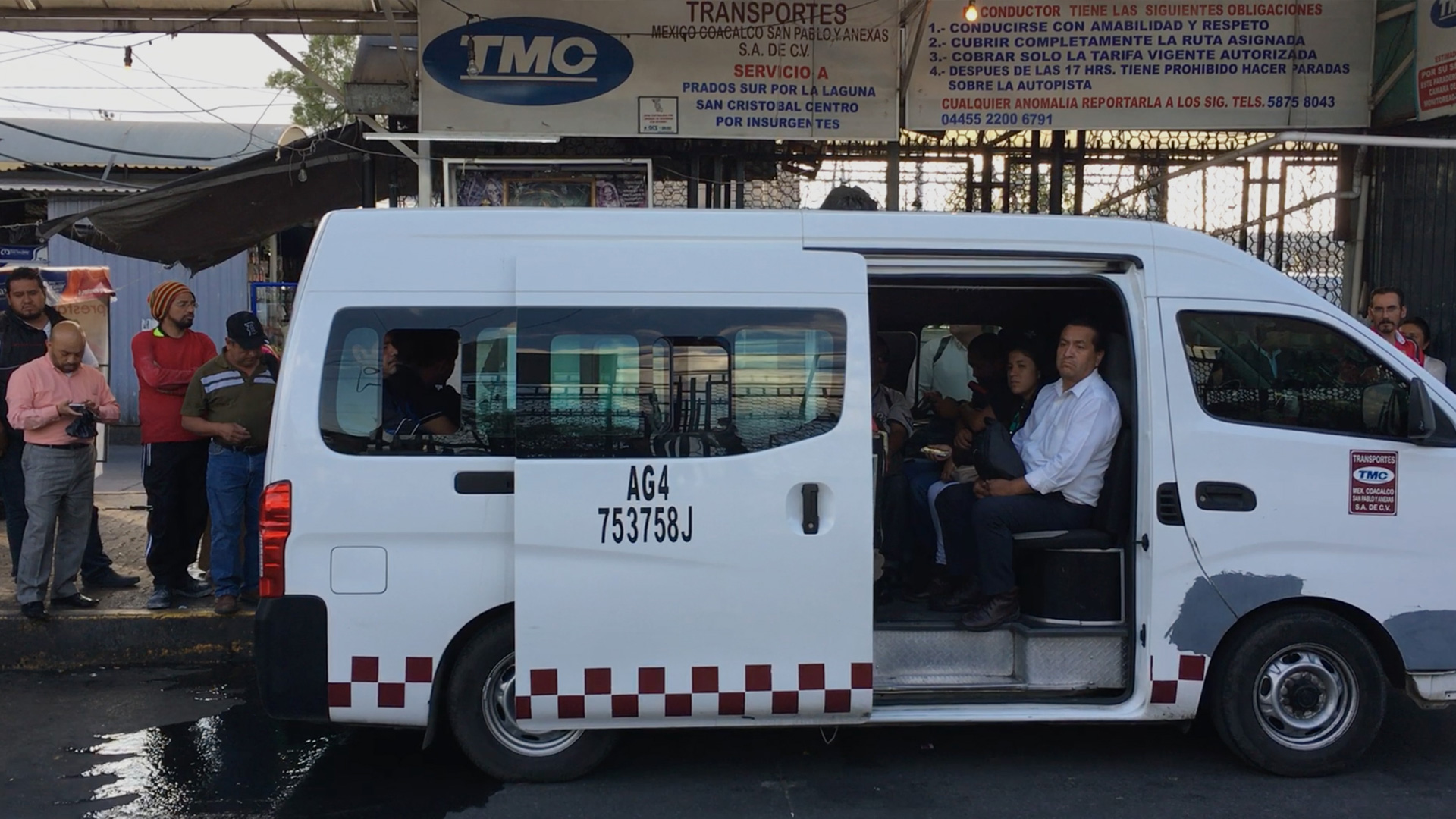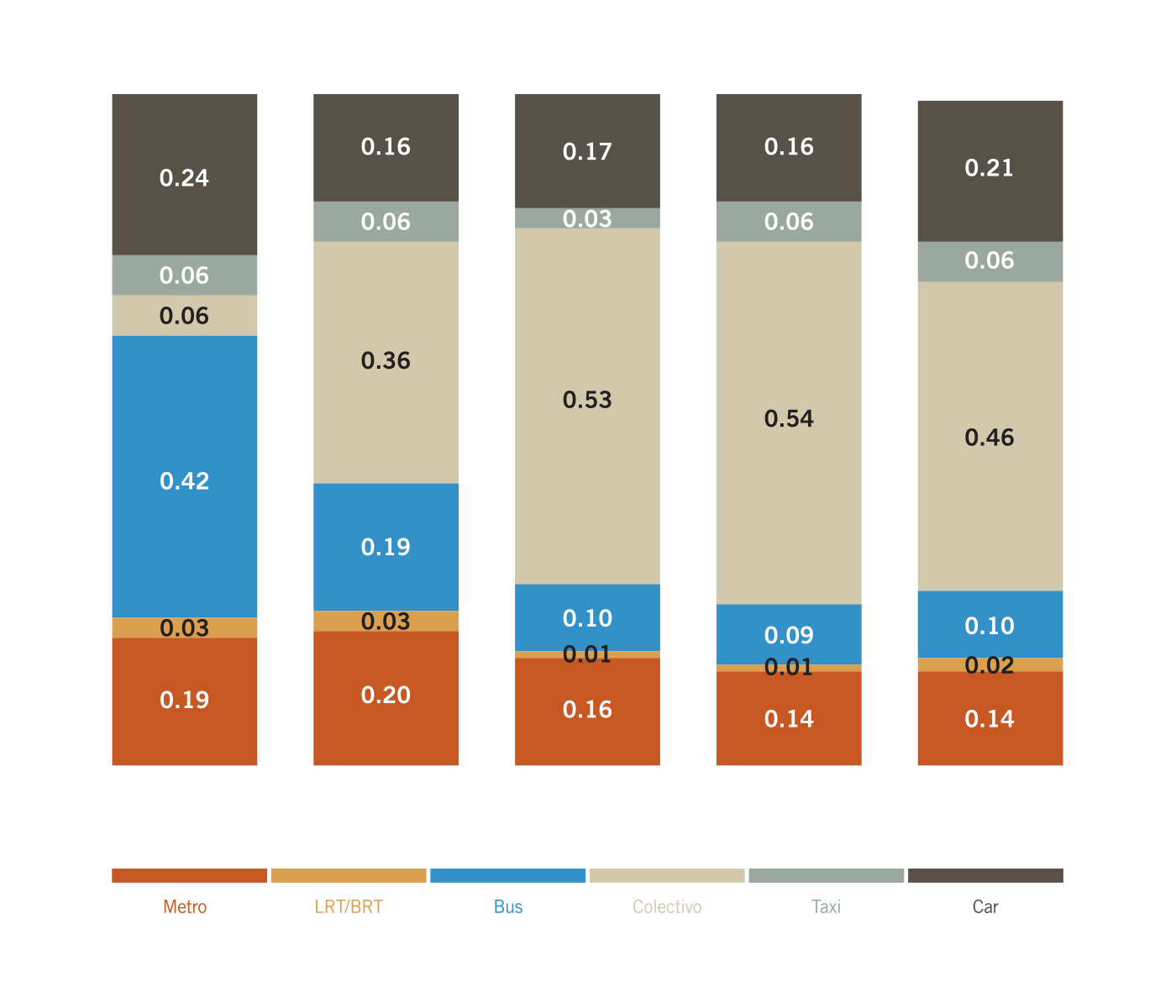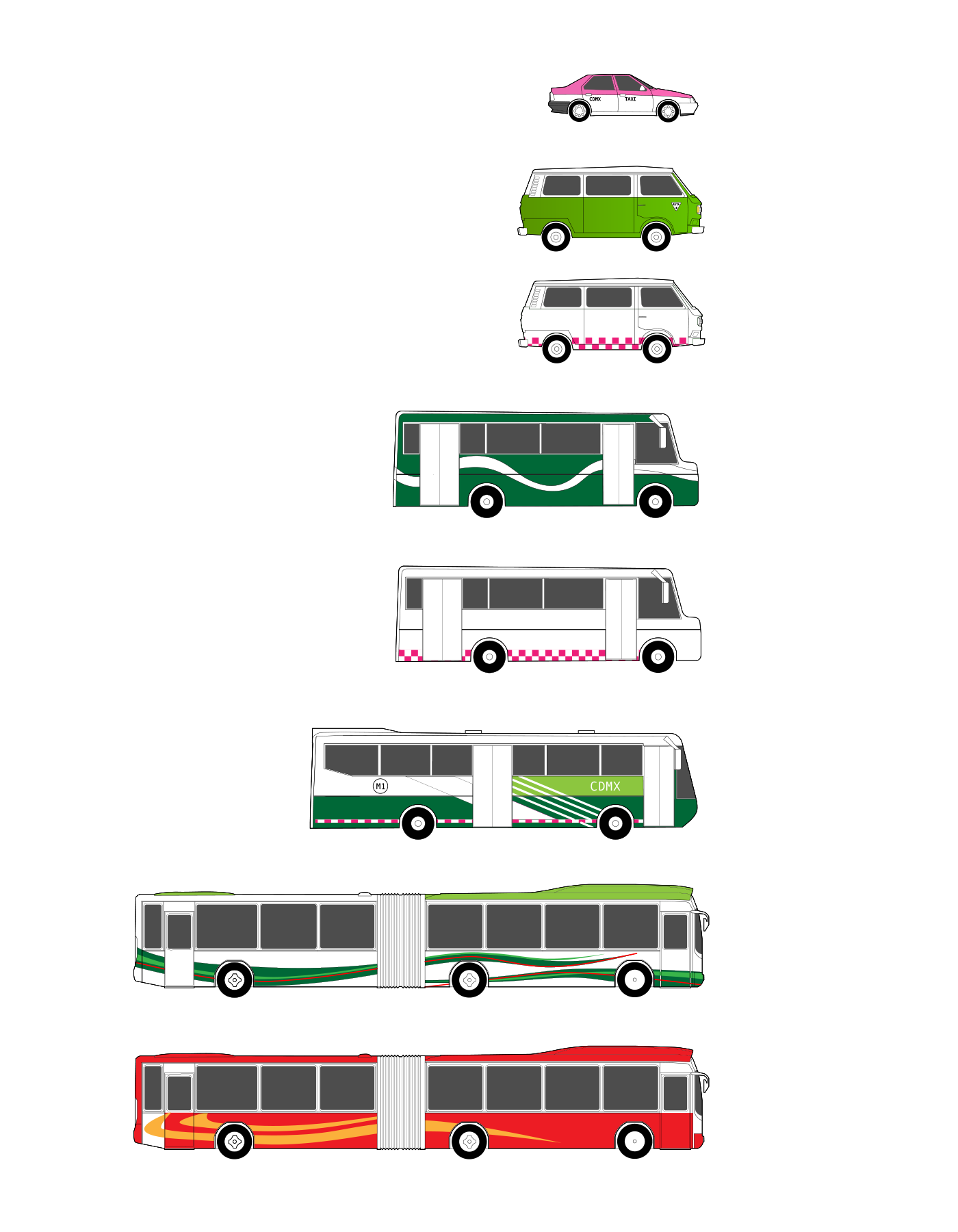The conditions that ultimately led to the development opportunity at Ciudad Azteca arose from several overlapping trends in the MCMA. While population growth over the last decades has concentrated in the State of Mexico, most jobs remain concentrated in Mexico City. Very few mass rail transit lines cross from Mexico City to the State of Mexico, while millions of people need to make such trips daily. Buses and minibuses (colectivos) provide the major share of public transportation services in the region, however these routes cannot legally cross state boundaries. Thus, bus and colectivo users traveling from the broader MCMA into Mexico City proper, must transfer at the border, typically at intermodal transfer centers. Serving an estimated 5 million users per day, these transfer centers remain little more than large parking lots and suffer from congestion, poor design and maintenance, and safety and public security concerns.

Public Transportation Between Mexico City and the State of Mexico
Metropolitan Transportation
Mobility in the MCMA has deteriorated dramatically in the last twenty years, during which time travel times have reportedly more than doubled and the city became one of the most congested worldwide (ITDP, 2014b; PUEC, 2013; SEMOVI, 2014). The number of private cars has more than doubled since 1990, with more than six million cars plying the MCMA’s roads today (PUEC, 2013). Government policy has amplified this trend, as investment in urban transportation infrastructure remains largely centered around the automobile. More than 70% of transportation related investments reportedly go towards car-oriented infrastructure, while cars only carry 21% of total MCMA trips (Garduno, 2016; Guerra, 2013).

Users traveling via colectivo
Roughly 60 percent of total public transportation trips (or 51% of total person trips) are done by colectivos, a semi-formal network of privately-owned and operated buses, microbuses and vans, that traverse the metropolitan area, filling the large gap between the need for affordable transit and the limited coverage of the formal mass-transit system (Guerra, 2013). Officially, these routes are coordinated by state government agencies, but the level of oversight is modest at best.

Mode share of motorized trips in MCMA
The vast majority of the population in the MCMA (73%) relies on a range of public transport modes to reach jobs, schools, and shopping (OECD, 2015). The city has one of the most extensive metro (urban heavy rail) networks in the world, a light rail line, a suburban rail line, trolleybuses, an expanding network of bus rapid transit (BRT) lines, and hundreds of bus and minibus lines. Together, public transport moves an estimated 15 million people every day (INEGI, 2007). Recent years have witnessed important improvements in public transportation and mobility in the MCMA, like the expansion of Bus Rapid Transit (BRT) lines (Metrobus is the agency in charge of BRT in Mexico City, and Mexibus its counterpart in State of Mexico’s BRT system), which has improved accessibility, congestion and pollution (OECD, 2015). Progress has also been made at the policy level, exemplified by Mexico City’s stated shift towards a mobility-driven transportation policy, making non-motorized modes a top priority (SEMOVI, 2014). Mexico City also has a large bike-share program (EcoBici) available in the central areas of the city. Nonetheless, investment in walking and cycling infrastructure remains limited and the majority of the metropolitan population now lives beyond the boundaries of Mexico City, where few high-capacity transit lines reach. In the MCMA, only 38% of neighborhoods are within one km of a mass transit station (OECD, 2015). Incentives for car ownership and use remain strong.
